2008.07.15 16:16
bored with modern & contemporary, yet?
...there really is no evidence that Michelangelo knew the rules so well that he thus also knew best how to break them. That logic is more indicative of a latter-day, wishful-thinking, pedagogical explanation.
Michelangelo was more of a reluctant architect; architectural commissions were generally not something he sought. Sculpture was his real passion, and I suspect it was his sculptor's eye that really led him to use/design architectural moulding the way he did.
2008.07.15 21:12
bored with modern & contemporary, yet?
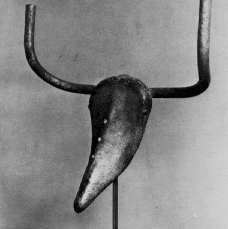
Picasso wasn't necessarily breaking any rules here, but he was being somewhat improper. What this work tells me is that Picasso recognized a sculptural potential in a bicycle seat and handle that when combined (improperly, in a way not done before) generated a masterpiece. I get the same sense when I look at Michelangelo's architectural detailing. Rather than simply breaking the rules, he saw potential in architectural details that others before him hadn't seen before, and he produced many improper combinations and many unprecedented details.
e.g., Porta Pia
Perhaps Michelangelo didn't even see classical architecture as a set of rules, rather a set of potentials. (And perhaps language/grammer too might not be seen as a set of rules, but rather a set of potentials).
2008.07.21 09:02
bored with modern & contemporary, yet?
"What Stein discovered was a writing style that celebrated its grammatical mistakes. In her most radical prose, she managed to make us conscious of all the linguistic work that is normally done unconsciously. We notice the way verbs instantly get conjugated (even irregular verbs), the way nouns naturally become plural, and the way we amend articles to fit their subjects. Stein always said that the only way to read her writing was to proofread it, to pay acute attention to all the rules she violates. Her errors trace the syntactical structures we can't see, as our "inside becomes outside."* Stein showed us what we put into language by leaving it out."
* This isn't as strange a method as it might seem. Ludwig Wittgenstein hit upon a similar method for his philosophy, which, like Stein's writing, was interested in the uses of language to the exclusion of almost everything else. Wittgenstein once said that he worked by "mak[ing] a tracing of the physiognomy of every [philosophical] error." Only by mapping out mistakes could he see how best to proceed. Samuel Beckett also subscribed to Stein's literary approach. "Let us hope that a time will come," Beckett wrote, "when language is most efficiently used where it is being misused. To bore one hole after another in it, until what lurks behind it--be it something or nothing--begins to seep through; I cannot imagine a higher goal for a writer today."
Jonah Lehrer, Proust was a Neuroscientist (2007), p. 164.
Here we have 'modernist' thinking.
Alberti's thinking appears more Platonic.
Michelangelo's thinking appears more Aristotelian.
| |
2008.07.26 09:18
I smell a Vorläufer
"A further study of the main house resulted in two radical options: a vertical and horizontal house, both based on the same configuration. ... By turning our initial proposal 90 degrees a vast potential was discovered in which each space can have its own personal relationship with the landscape. What used to be a conventional patio becomes a centrally located multi-level living space which gives the inhabitants an unprecedented special experience and at the same time fits the very specific demands of the program."
--description of OMA's Ascot Residence (2003).
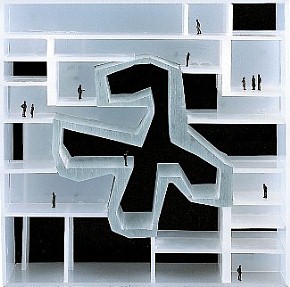
Wonder what would happen (if anything) when the above "nine plans" are flipped up 90 degrees. For example, a flipped-up 21st Century Museum of Art...
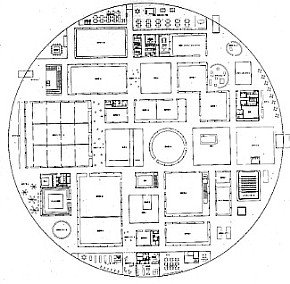 ...looks almost like this...
...looks almost like this...

One easy way to conceptualize a new paradigm is to invert the "set of assumptions, concepts, values, and practices that constitutes a way of viewing reality".
...or just practice the twist in front of the mirror[-copy plan].
2008.05.19: "I'm secretly working on Plan Atypical"
| |
2008.07.27 15:48
Making Plans
Ease versus difficulty is hardly a sufficient gauge here.
I learn from the history of all the plans that are ignored, along with the schematics behind the ignorance. Architecture Not Now indeed!
2008.07.31 15:29
eisenman
...if you do intern at Eisenman, bone up on the I Ching before you get there, and then let it be known that the I Ching is one of your avocations via demonstrations of your meaningful chancyness. You'll have a blast!
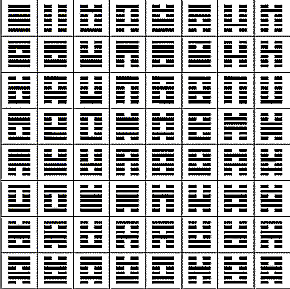
2008.08.02 09:22
I smell a Vorläufer
There's no argument as to the existence of architectural precedents, rather that the precedents themselves manifest a nimiety of diversity.
more from Oresko...
"But probably the most important and wide-reaching effect Piranesi had upon his friend was the transmission of his notion of artistic licence. The concept of abstracting the elements of classical culture and then rearranging them into a pattern of one's own was developed and expounded largely by Piranesi. As with Inigo Jones, it is obvious that Robert Adam cast his intellectual net widely and borrowed from a staggeringly rich variety of classical, Renaissance, Baroque and contemporary sources. But, again with Jones, his scholarly tabulation of a seemingly inexhaustible number of architectural details and the concomitant reliance upon earlier modes for inspiration did not result in Adam's being a mere copyist or pasticheur. Elaborating upon Piranesi's doctrine of artistic licence and relying upon what he saw as the authentically classical approvel of the individual artist's genius, Adam blended his elements, what ever their source, into his own personal manner, and the compound which resulted was always pure Adam."
Is Unarrested Architecture written by otherness?
"Rather is it a matter of destabilizing the current assumptions by admitting otherness in a way that disturbs the very concept of architecture and the architect. It is time for expanded architects to publicly explore the enigmas and destabilizing elements of all buildings rather than repress them, allowing the mystery or instability of the built object that attracted them in the first place to come to the surface, and admitting mystery into their own stories."
--Wigley, 2006.
You know, Wigley actually told me it was indeed fate that I was there (in Brussels, 1999), because I had already manifest what was the point of the closing address he was to deliver the next day. I guess he smelled a Vorläufer.
| |
I smell a Vorläufer
2008.08.07 08:44
I smell a Vorläufer
"The errors that Robert Adam detected in Palladio's drawings for the reconstruction of the 'Baths', published in 1730 as Fabbriche antiche disegate da Andrea Palladio, encouraged a dismissive attitude to Palladio and led him to question the accuracy of the renaissance as a reliable recorder of classical architecture. It became easy for the brothers to delude themselves into thinking that they alone possessed a deep insight into the antique and had the knowledge necessary to correct the errors of renaissance draughtsmen. But such an arrogant stance was more a public one, which did not stand in the way of their serious study of the renaissance or their need to borrow directly from it, from time to time. The enormous variety found there appealed to them as much as the inventive classicism of the antique."
Tait
Just as an aside, Fabbriche antiche disegate da Andrea Palladio was used in the formation of Roma Interrotta Sector VI.
Authorship Architects: A Work in Progress
1. Piranesi
2. Piranesi
3. Piranesi
4. Adam & Adam
5. Durand
6. Durand
7. Seroux d'Agincourt
8. Schinkel
9. Schinkel
Coda: Hejduk
2008.08.13 15:38
has the sun finally set on oma?
This appeals to me. The overlay of generative elements and the resultant hyper-figure/hyper-ground.
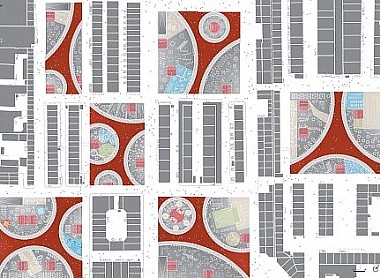
I like this too.

| |
2008.08.13 15:57
has the sun finally set on oma?
As to what's next, maybe this, or this, or this, or this. And there's always hope.
2008.08.17 12:03
has the sun finally set on oma?
I just looked up trend spotting on google because that's what current architectural theory/history wants to be good at but isn't, and followed a link and then another link, and there it was, the conceptual model of my next building...
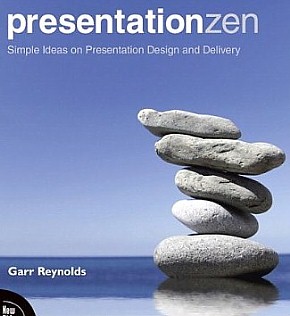
I too want to be a risky architect.
2008.08.22 16:31
If it ain't Baroque, don't fix it.
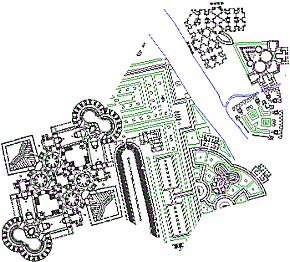
Campus Theatrics Times Two, SagaCity
|